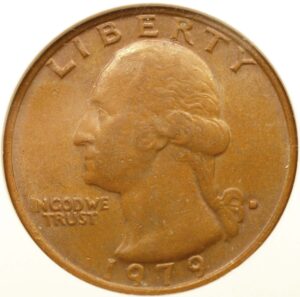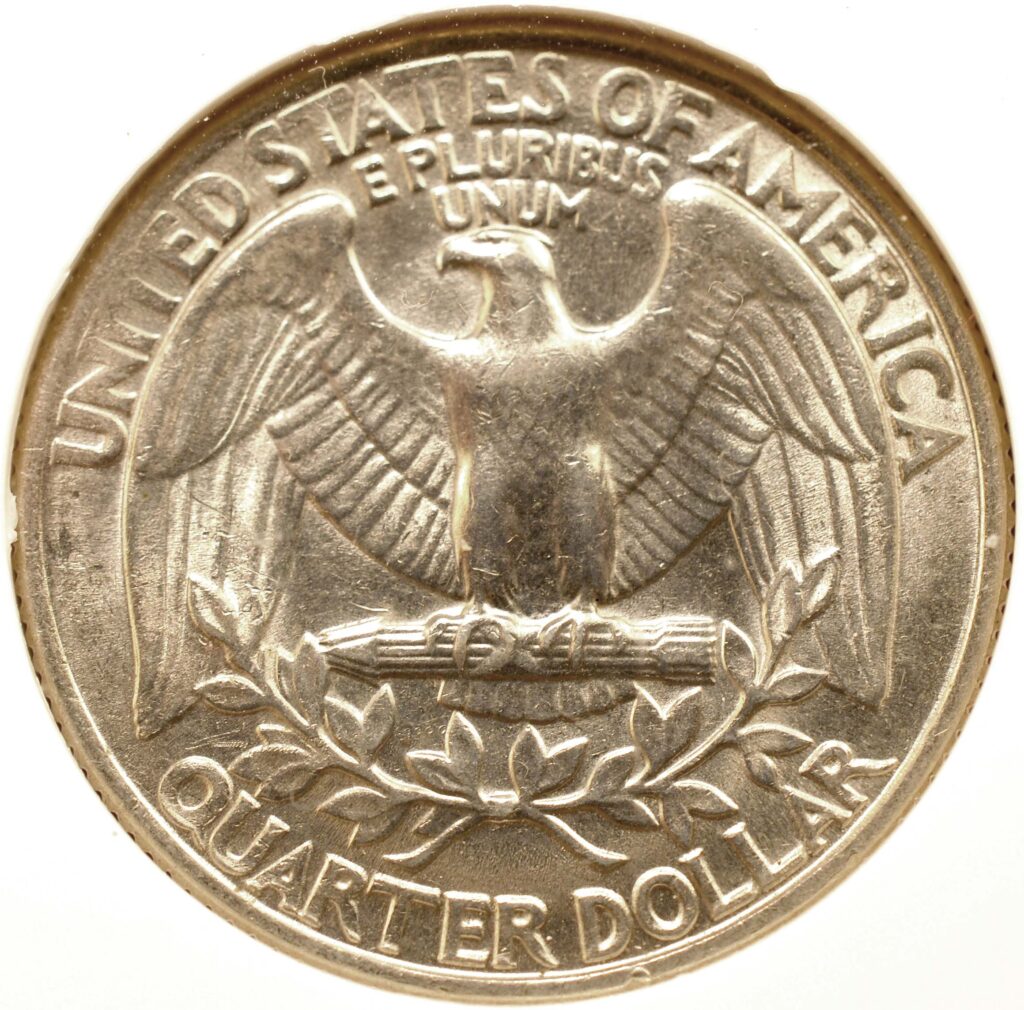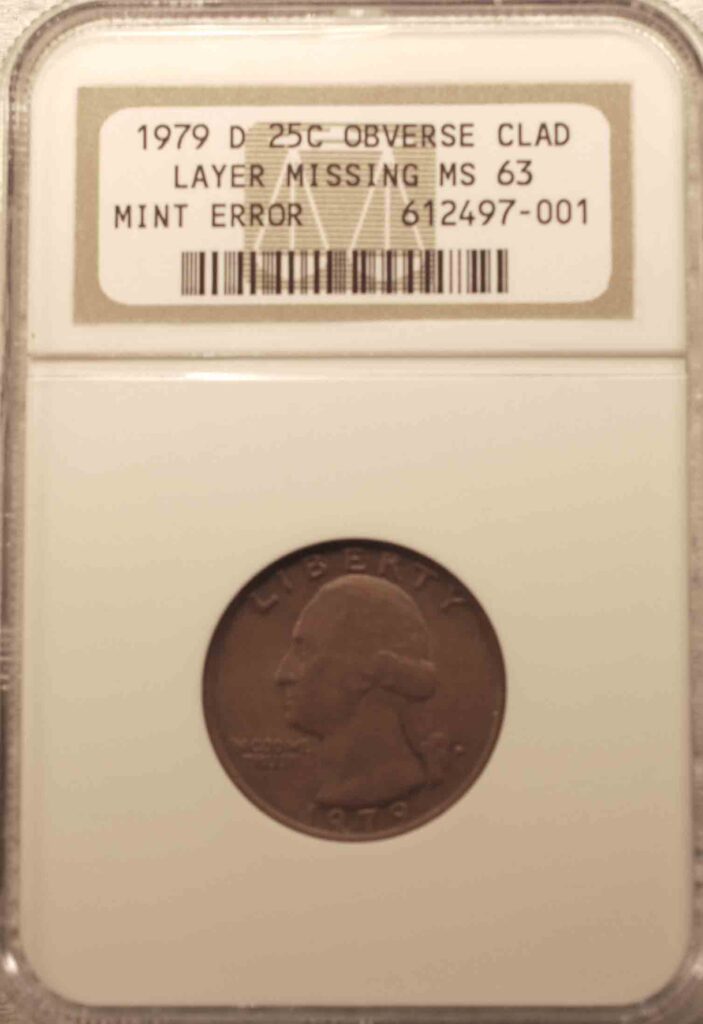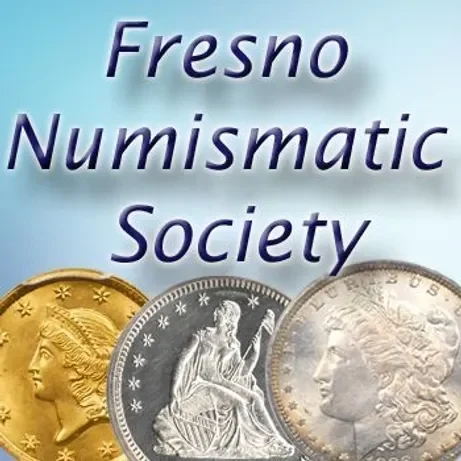Often errors occur during the coin manufacturing process. Depending on the nature of the error, the resulting abnormal coin may have no significant extra value, it may carry a slight to moderate value premium to an error specialist, or it may be very valuable. This article shows examples of several types of error coins.
This is a Flying Eagle cent with a “clipped planchet” error. The blank disc (“planchet”) which was struck to produce this coin was missing a small section, probably because the punch that cut out the planchet slightly overlapped the hole from a previously-punched planchet. This produces an error known as a “curved clip”, where the finished coin is missing a small portion of its circumference. As of 2024 a normal Flying Eagle cent in this grade might sell for about $70. Flying Eagle cents are seldom seen with errors. This example with the minor clipped planchet might fetch an extra $50 or so from an interested error collector.

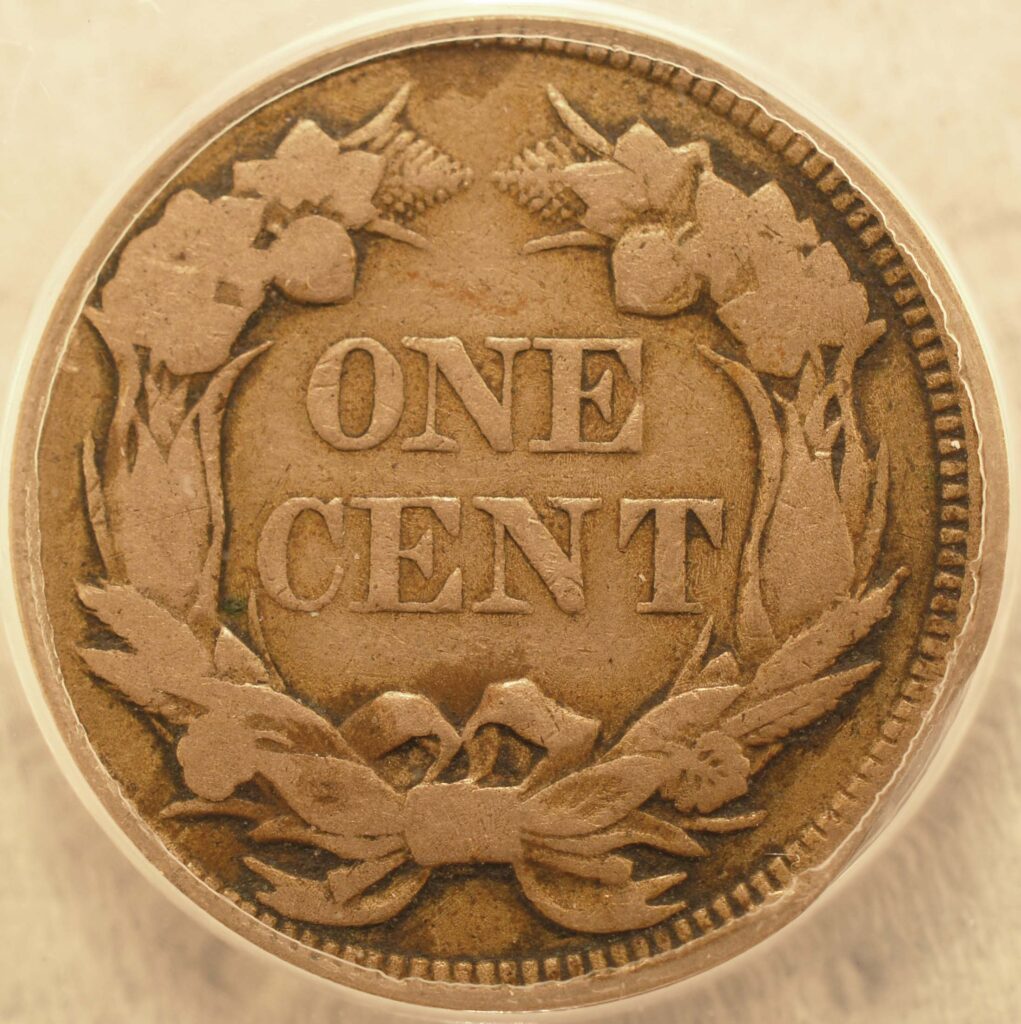
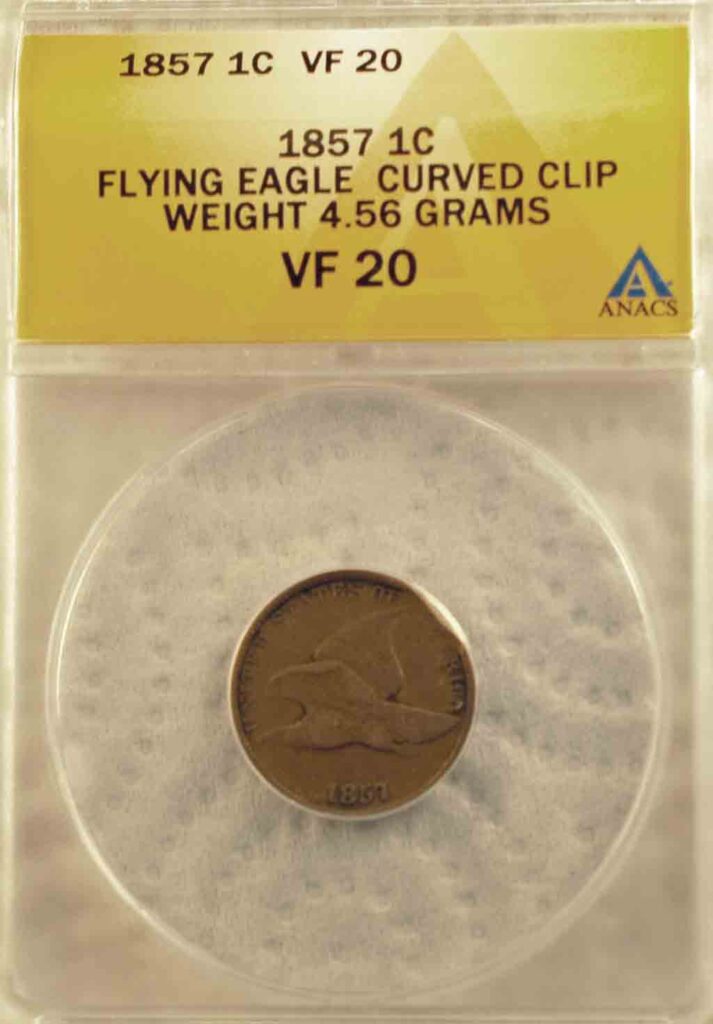
Another type of error occurs when a piece of debris finds its way into the coining chamber. The debris is stamped onto the surface of the coin when the strike is performed. This error type is commonly known as a “strike-thru”. The debris may or may not end up attached to the finished coin. This Kennedy half dollar had a small piece of iron or steel stamped into its surface. The inclusion became firmly bonded to the coin surface and is therefore referred to as “retained.” A 1967 Kennedy half dollar is a very common coin, worth only a few dollars. The error could easily inflate the value to $50 or more.
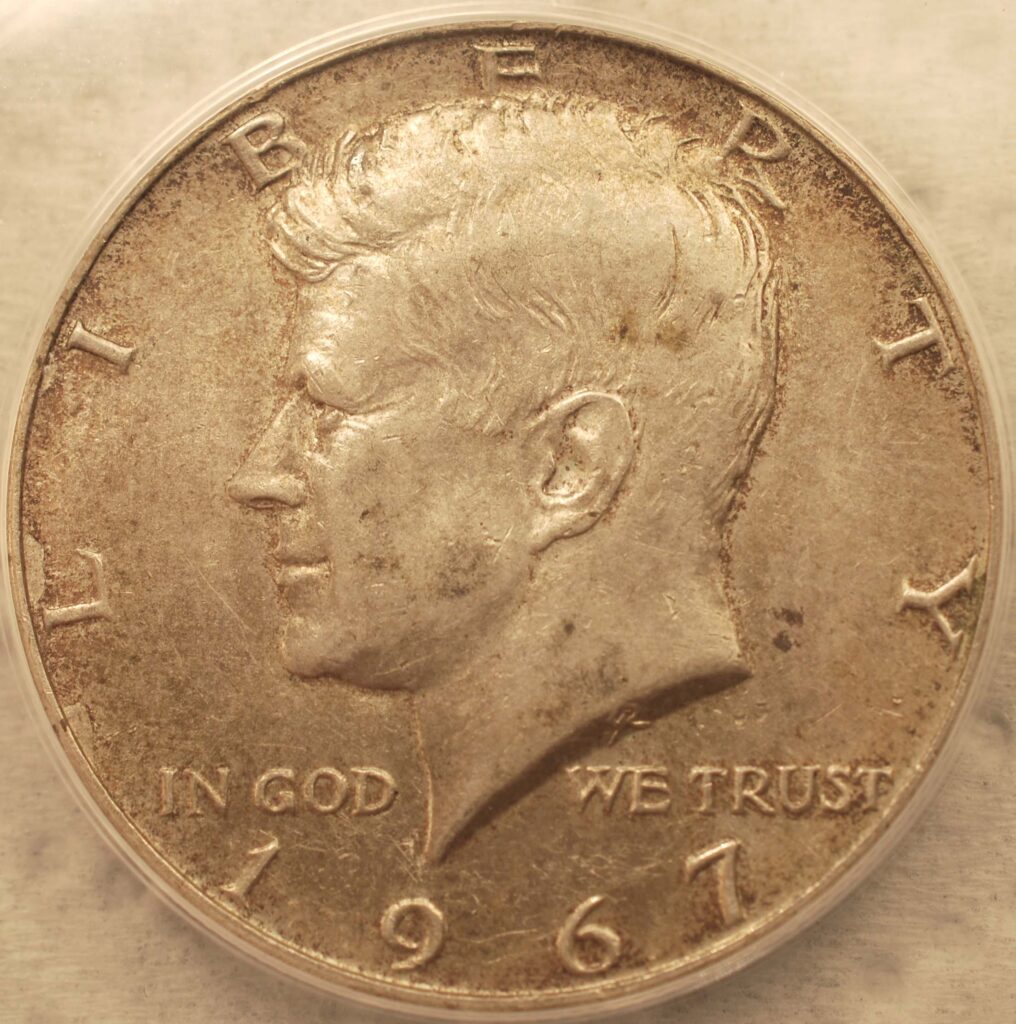
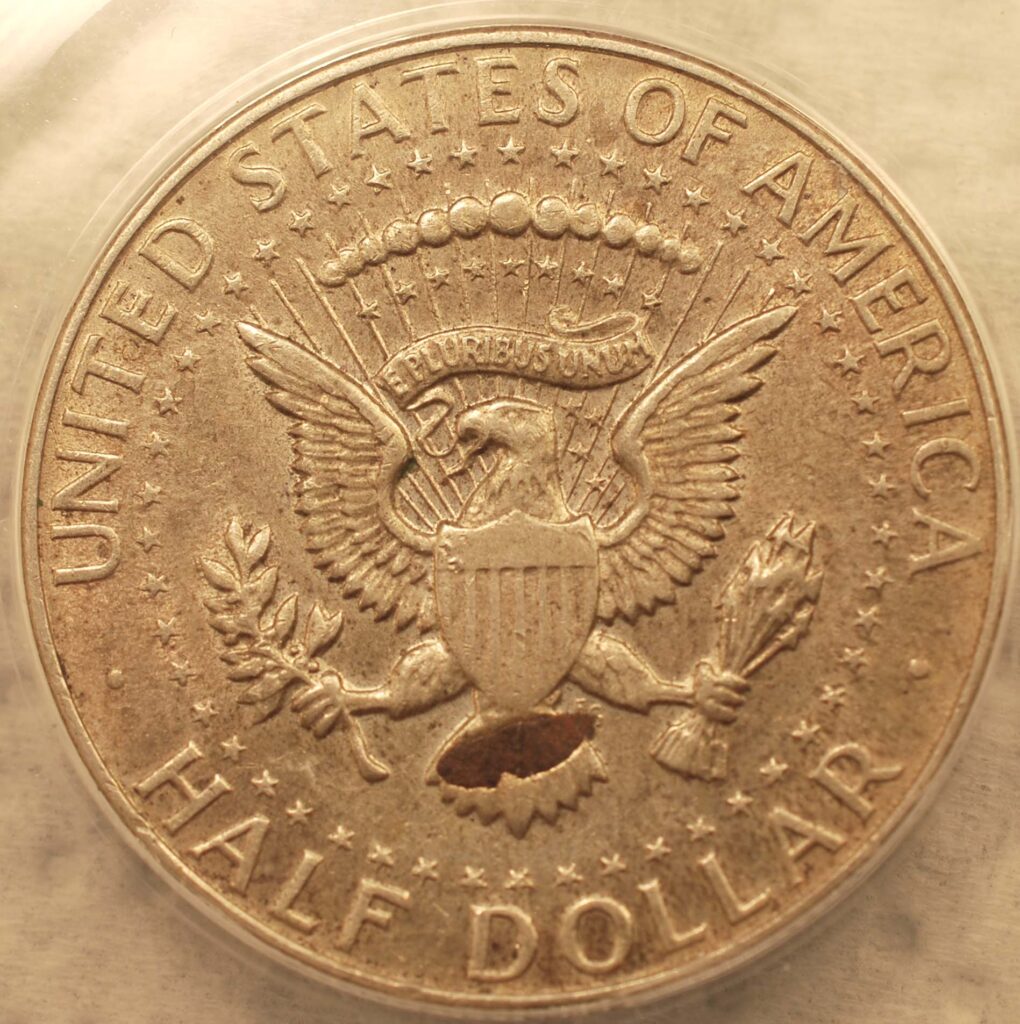
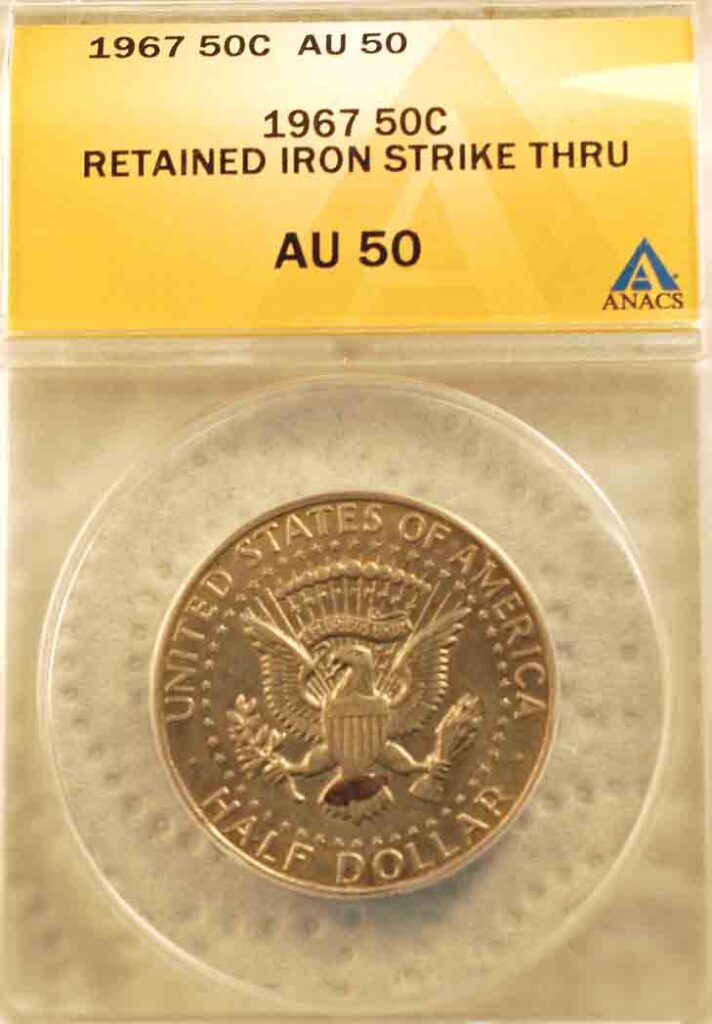
Sometimes a coin fails to properly eject from the coin press after it is struck. If it falls back over the coining chamber it may be struck a second time. The second strike usually obliterates the portion of the design that is between the dies and creates a new struck image. The new image may be off-center by a random degree. The resulting error coin can be quite spectacular. This 1999-D Jefferson nickel was double struck in such a manner that the final coin has two dates. It has been graded an encapsulated as a double-struck error coin by the ANACS coin grading service.
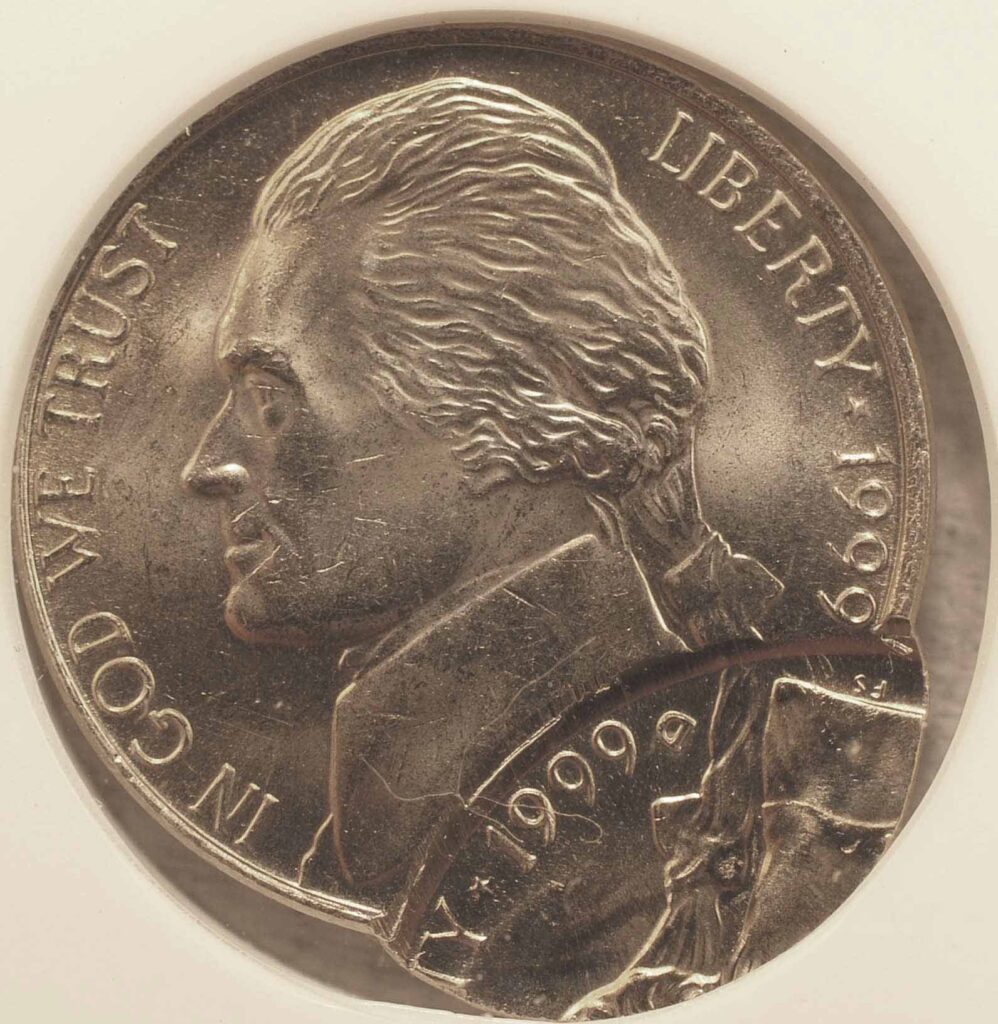
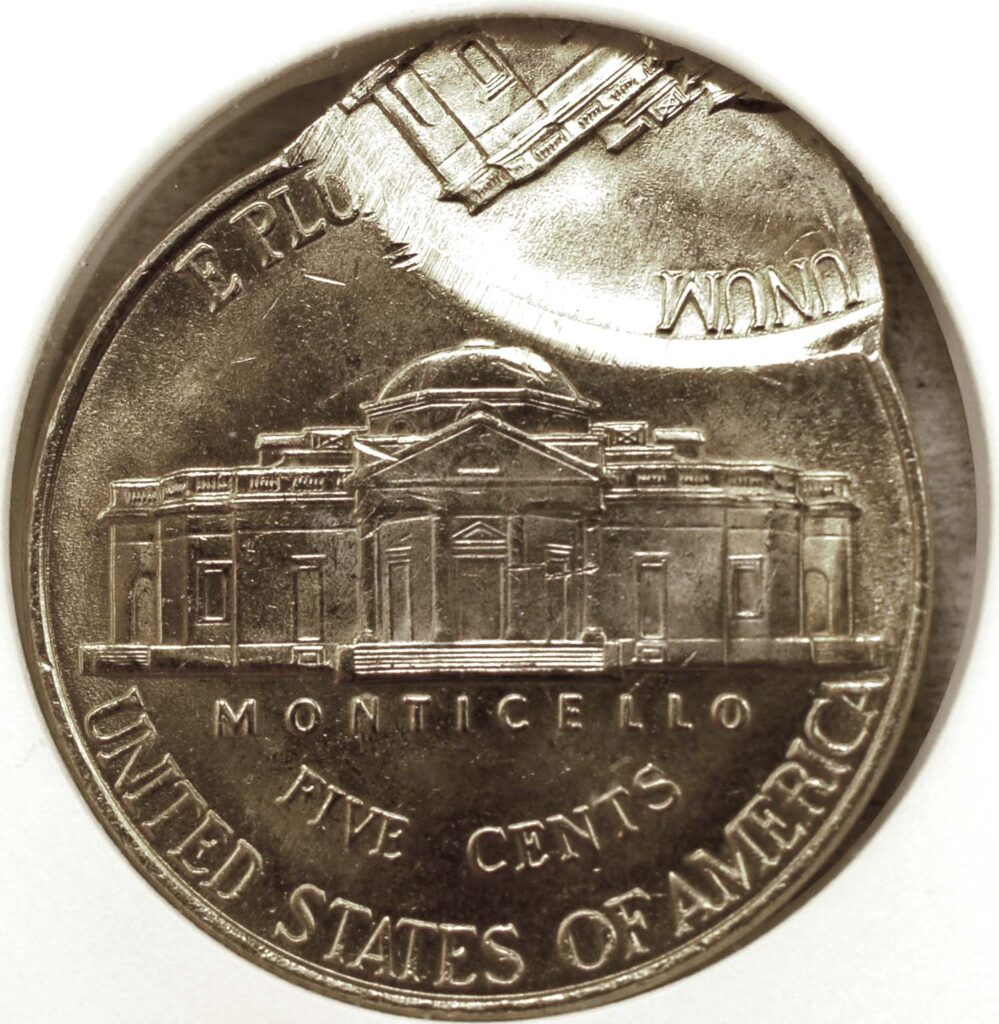

Sometimes the die itself can be manufactured with a defect. A “doubled die” error is fairly common for various US coins. The actual dies that are used to strike coins are generally made by pressing a master die onto the steel working die to transfer the engraved coin design. This process generally requires repeated pressings to completely transfer the design. The working die is heated and cooled (annealed) between pressings to soften the steel. If the working die is misaligned with the master die during the final pressing the finished die may show doubling of some or all of the design elements.
The most famous example of this error type is the 1955 Doubled Die Lincoln cent, which has dramatic separation of the doubled design elements on the obverse. These cents are very popular among error collectors and command high prices. Less spectacular doubled die coin however are rather common and generally don’t cost very much. The 1964-D Kennedy Half Dollar can be found with several different doubled die errors. Minor doubling is most obvious on the letters of In God We Trust on the obverse. There are even tripled and quadrupled die versions known. The doubling effect is fairly small for these coins and you need magnification to see the doubling clearly. Here is an example that was found among a group of ordinary 1964 half dollars.
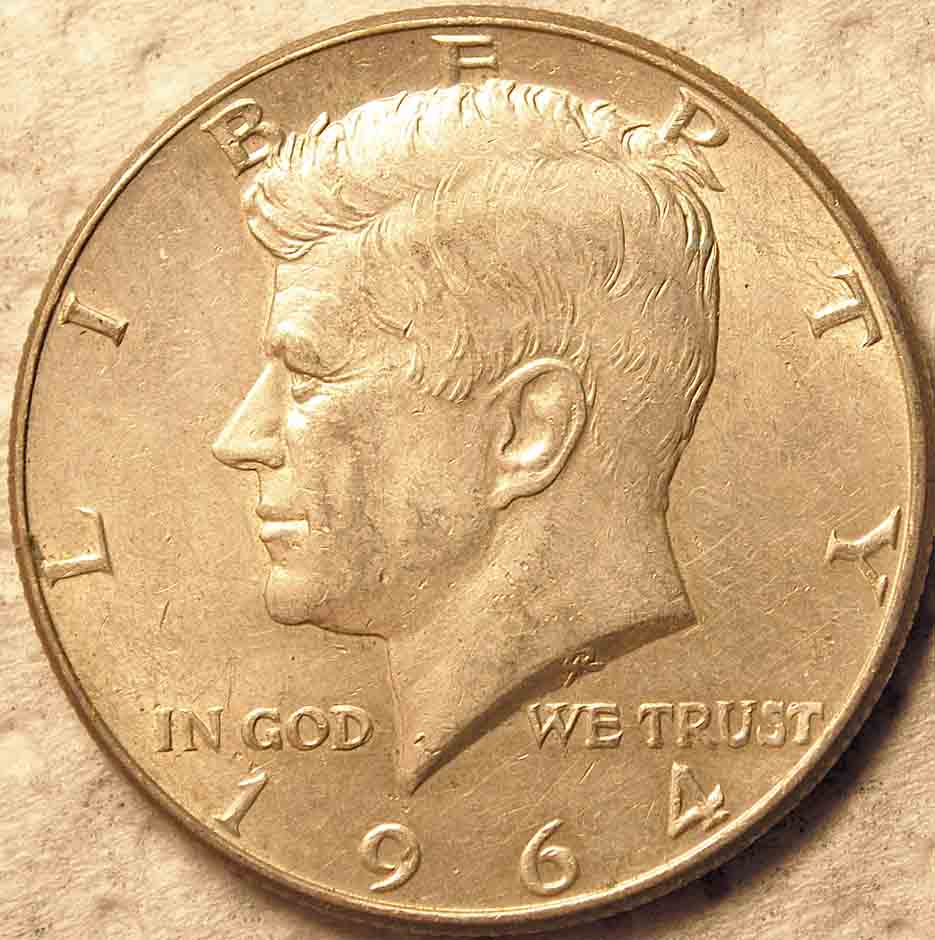
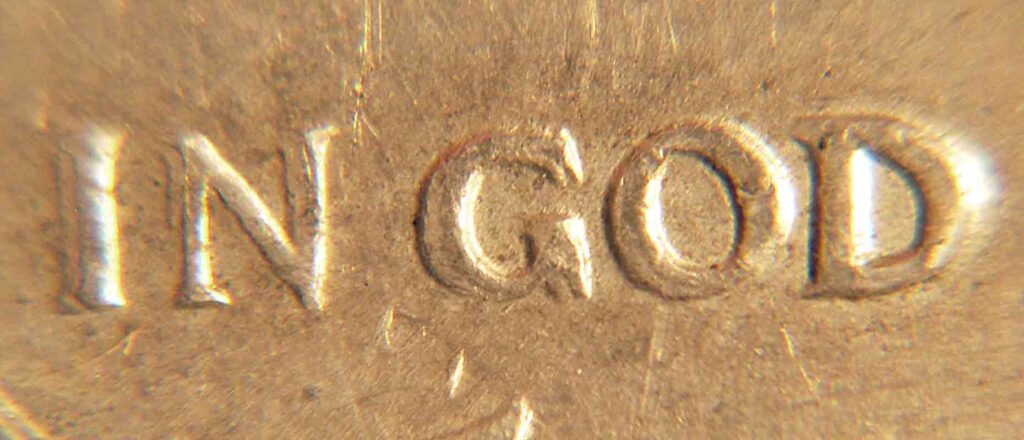
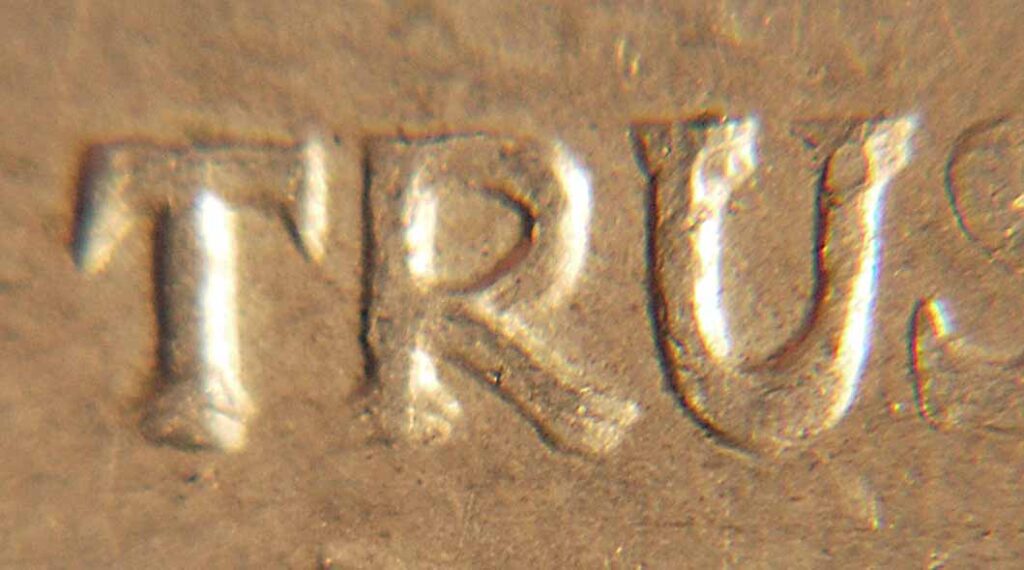
Yet another error class is known as a Rotated Die error. The obverse and reverse dies for United States coins are positioned such that a struck coin has “coin alignment” for the front and back designs. If you hold a normal coin with obverse image in the vertical position and then flip the coin around its horizontal axis, the reverse image will appear “right side up”. Sometimes however, the dies may be installed incorrectly in the press, or get twisted due to equipment wear or damage. Any coins struck at that point will have incorrect alignment of the obverse and reverse designs.
Rotated die errors were common during the early years of United States coinage. However, with improving technology and greater precision for machine manufacturing, modern coins rarely show any die rotation errors. This 1983-S Kennedy Half Dollar is one of those rare exceptions. Somehow the reverse die became rotated by about 90 degrees (a one-quarter turn) and this spectacular error was generated. It is even more exotic because the coin is a proof striking, made specifically for coin collectors. Proof coins are supposedly inspected for quality before they are packaged for sale. Somehow this coin made it past the inspectors. Apparently, it was eventually broken out of its original government packaging and spent since it was discovered in a roll of mixed half dollars obtained at face value from a bank. It’s a very rare coin, purchased for face value!
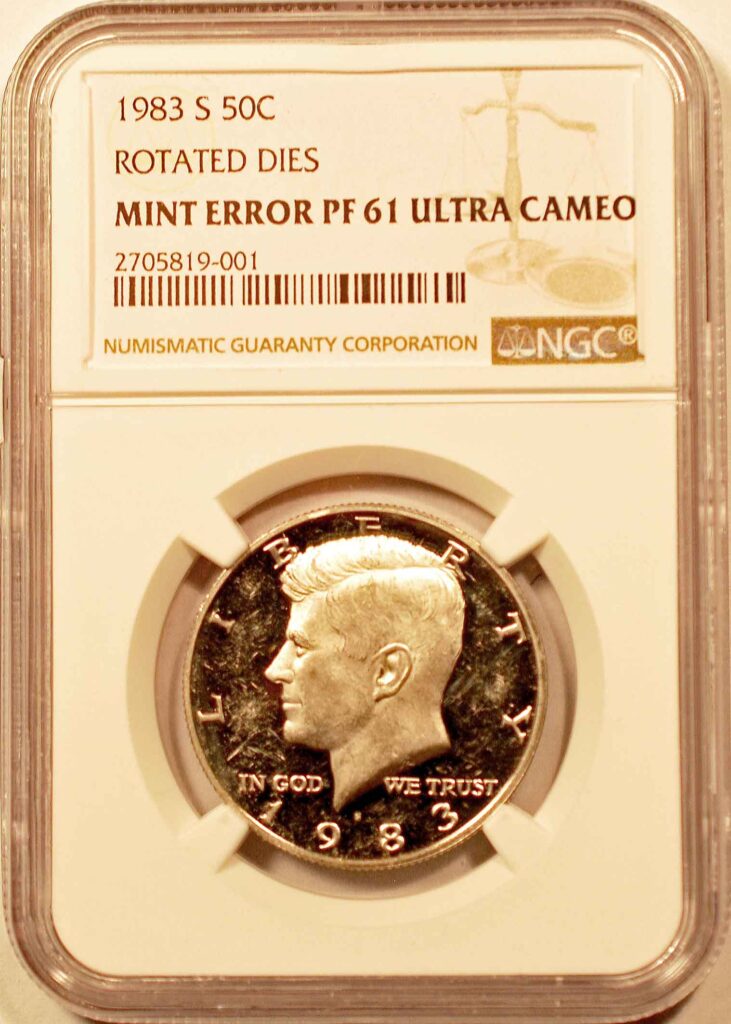
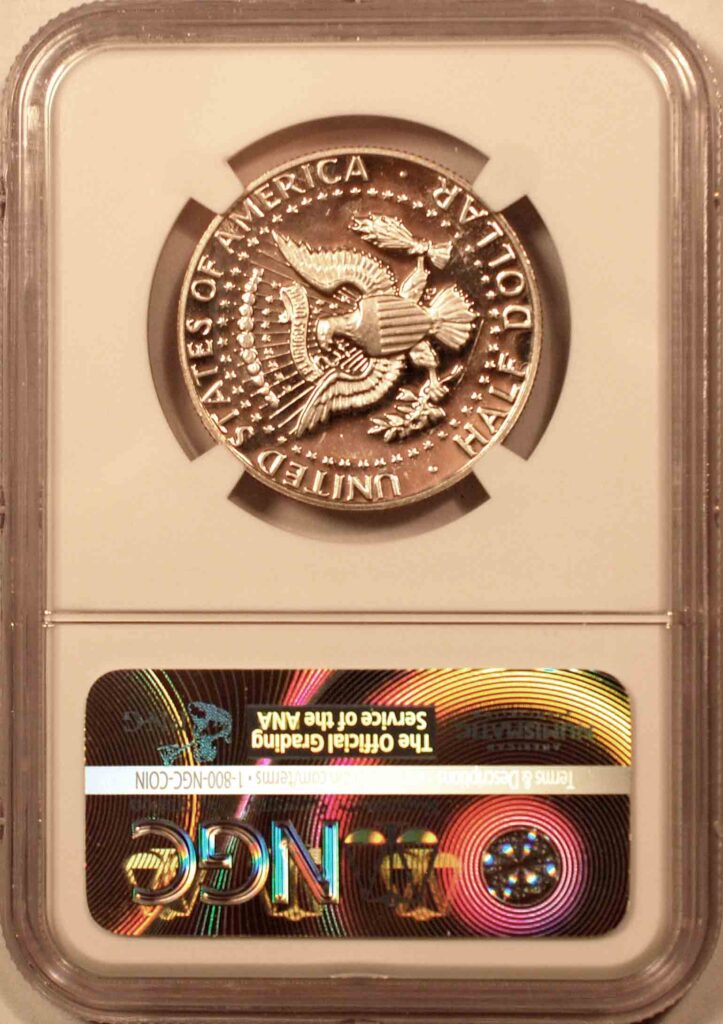
Yet another type of error became possible when the United Stated Mint began striking clad coinage in 1965. Dimes, quarters, and half dollars were made from a “sandwich” of three metal layers. The top and bottom layers were composed of a copper-nickel alloy while the center layer was pure copper. The alloy layers have a silvery-white color, while the copper interior has a coppery brown-orange color. You can see the copper layer on most modern coins by looking at the edge of the coin. Such coins are commonly referred to as clad coins.
On rare occasions a blank planchet prepared for a clad coin is missing some or all of one of the clad layers. In this case some or all of the copper interior layer will be exposed, usually on just one side. This 1979-D Washington Quarter is an excellent example of this type of error. The alloy outer layer was completely missing on one side so the struck coin ended up with a normal-looking reverse and a copper-colored obverse. Since a clad layer represents a significant amount of the mass of a normal coin, this error piece is around 20% lighter in weight than a normal quarter. By the way, this coin was found in change from a vending machine; another fantastic error coin obtained at face value!
